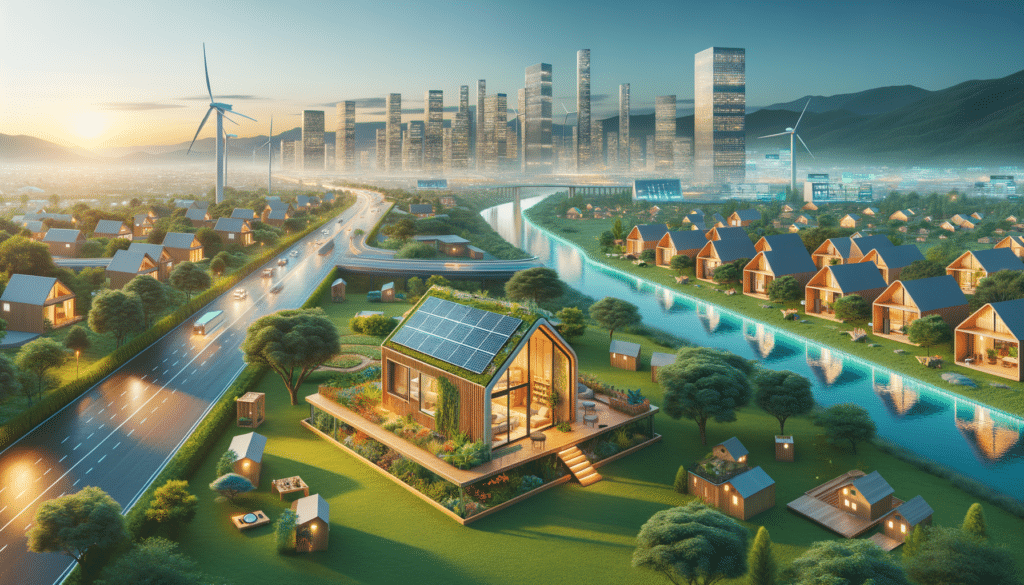The Animal Blog

Why Prefabricated Homes Are a Smart Choice in 2025
The Rise of Prefabricated Homes
In recent years, the housing industry has witnessed a remarkable shift towards prefabricated homes, a trend that has continued to gain momentum in 2025. These homes, often referred to as prefab homes, are constructed off-site and then transported to their final location for assembly. This method offers numerous advantages over traditional construction methods, making it a compelling choice for many prospective homeowners.
One of the primary drivers behind the rise of prefab homes is their cost-effectiveness. Traditional home construction can be prohibitively expensive, with costs often spiraling due to unexpected delays or material shortages. Prefab homes, on the other hand, are manufactured in a controlled factory environment, which minimizes waste and reduces the likelihood of costly overruns. This makes them a financially attractive option for those looking to build a home without breaking the bank.
Another factor contributing to the popularity of prefab homes is their sustainability. As environmental concerns continue to take center stage, more people are seeking eco-friendly living solutions. Prefab homes are designed to be energy-efficient, often incorporating sustainable materials and technologies such as solar panels and energy-efficient appliances. This not only reduces the carbon footprint of the home but also leads to long-term savings on energy bills.
Customization and Flexibility
One of the most appealing aspects of prefabricated homes is the level of customization they offer. Unlike traditional homes, which may require extensive modifications to suit individual preferences, prefab homes can be tailored to meet specific needs and tastes from the outset. This flexibility extends to the design, layout, and features of the home, allowing homeowners to create a living space that truly reflects their personality and lifestyle.
Prefab homes come in a variety of styles and sizes, from compact, minimalist designs to spacious, multi-story structures. This diversity ensures that there is a prefab home to suit almost any aesthetic preference or functional requirement. Additionally, many prefab manufacturers offer a range of customization options, enabling buyers to choose everything from the type of siding and roofing materials to the interior finishes and fixtures.
The flexibility of prefab homes also extends to their construction timeline. Because these homes are built in a factory setting, they are not subject to the same weather-related delays that can plague traditional construction projects. This means that prefab homes can often be completed in a fraction of the time it takes to build a conventional home, allowing homeowners to move in sooner and begin enjoying their new space.
Quality and Durability
While some may have concerns about the quality and durability of prefabricated homes, advancements in construction techniques and materials have resulted in homes that are built to last. Prefab homes are constructed under strict quality control measures, ensuring that each component meets high standards before it leaves the factory. This attention to detail results in homes that are not only well-built but also capable of withstanding the rigors of time and weather.
Moreover, prefab homes are designed to meet or exceed local building codes and regulations, providing peace of mind to homeowners regarding the safety and structural integrity of their investment. Many prefab homes also come with warranties that cover various aspects of the construction, offering additional reassurance.
Durability is further enhanced by the use of modern materials and construction techniques. For instance, many prefab homes incorporate steel framing, which is known for its strength and resistance to pests and fire. Additionally, the precision with which these homes are built in the factory setting minimizes the risk of structural issues that can arise from on-site construction errors.
Efficiency in Construction
The efficiency of prefabricated home construction is one of its most significant advantages. Traditional construction methods are often hampered by delays, inefficiencies, and waste. In contrast, prefab homes are built in a streamlined, assembly-line process that maximizes productivity and reduces waste. This efficiency translates into cost savings for the consumer and a lower environmental impact.
Factory construction allows for the use of advanced machinery and technology that would be impractical on a traditional construction site. This includes precision cutting tools and automated systems that ensure each component is manufactured to exact specifications. The result is a home that fits together seamlessly, with fewer defects and a higher overall quality.
Furthermore, the controlled environment of the factory reduces the risk of weather-related damage to materials, which can be a significant issue in traditional construction. This control not only speeds up the construction process but also contributes to the overall sustainability of the project by minimizing material waste.
Future Prospects of Prefab Homes
As we look to the future, the prospects for prefabricated homes continue to be promising. With advancements in technology and an increasing focus on sustainable living, prefab homes are well-positioned to become a mainstream housing solution. Innovations such as 3D printing and smart home technologies are being integrated into prefab designs, further enhancing their appeal and functionality.
The demand for affordable housing is another factor driving the growth of the prefab home industry. As urban areas become more crowded and real estate prices continue to rise, prefab homes offer a viable alternative for those seeking affordable, high-quality housing options. This trend is likely to continue as more people recognize the benefits of prefab living.
In conclusion, prefabricated homes represent a smart choice for those looking to build a new home in 2025. Their cost-effectiveness, sustainability, and customization options make them an attractive option for a wide range of consumers. As the industry continues to evolve and innovate, prefab homes are set to play an increasingly important role in the future of housing.









